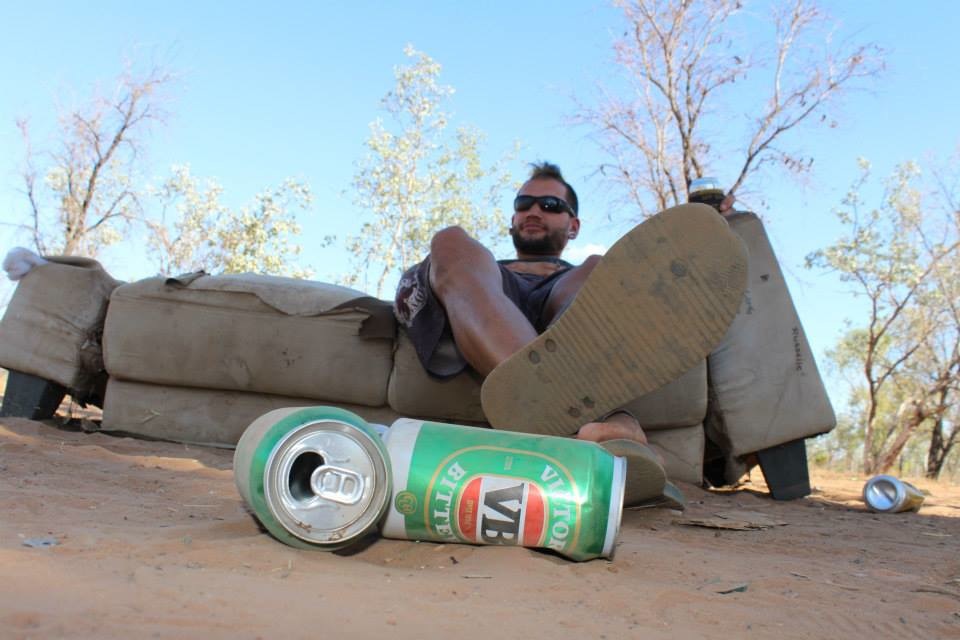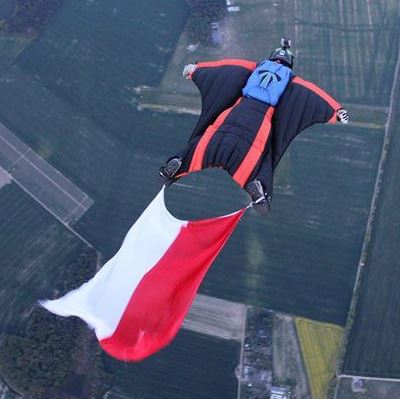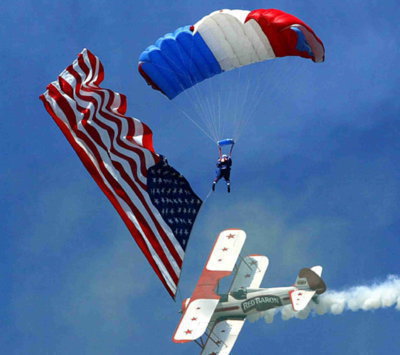Recommended Posts
billvon 2,434
>reserve over the tail situation.
Has this ever happened?
DocPop 1
~ CanuckInUSA
wmw999 2,148
Wendy P.
JanuszPS 0
QuotePersonally I don't use one, in many of the types of jumps I do I don't WANT the reserve coming out until I tell it to...and since I only want one set of EP's in my minuscule memory bank, I go without on all jumps.
I KNOW that I will be fully responsible for the reserve pulling part of any malfunction I incur and plan accordingly.
Even at my advancing age and declining health I'm pretty quick at determining what's going on and how to deal with it.
I usually pull at 2500'...My gear is very consistent, if a high speed is taking place I know it by 2000' and go with plan B.
If a slow speed is experienced, I try ONE TIME to correct the problem, and failing that ~ Plan B.
If for whatever reason I find myself going faster than land-able at or under 1000'....plan B, foregoing main release.
QuoteI compensate by removing any 'fuck around factor' knowing I need to be altitude aware both before AND during deployment, and get the warm fuzzies deploying the reserve in a controlled manner having correct body orientation.
+1 My age
just personal choice to simplify life in already difficult situation. although I might provide small differences in EP's depending on type of jump (e.g. fs, camera, WS) but they are minor. I just wonder how many jumpers forget to disconnect the rsl in the situations which they suppose to do so (at least in their EP's).
As a side note, during my very fast back spin after cutting away I waited just enough to get belly down possition and I released the reserve knowing that I might end up with twists on the reserve, which happened. but in accordance with the witness jumper he saw me going from my back to belly in a split of a second. I waited though for a short while to be "more" stable before I pulled the reserve handle.
j.
DocPop 1
QuoteDang -- what kind of people do you jump with? I don't think I've seen that many, and since I do RW mostly, we have people climbing all over the airplane when they float!
At a guess, I would say that I jump with much lower experience people than you do. I am not sure about the third one being on climb-out as it may have been in freefall.
I agree that it is not a good record.
~ CanuckInUSA
Gene03 0
Stanislaw Jerzy Lec quotes (Polish writer, poet and satirist 1906-1966)
sundevil777 94
Quote>Metal D-handles are easier to dislodge on climb-out leaving you with a possible
>reserve over the tail situation.
Has this ever happened?
About 20 years or so ago, at Snohomish, WA, it took the life of a jumper and damaged their twin bonanza. I recall another incident from these forums where the swaged ball managed to get snagged by a hole in the door frame, but I don't know if it went over the tail. I would expect there to be other incidents.
It would be nice of the cable end of reserve handles was tucked away somewhere it couldn't get snagged. The pillow handles do have this advantage.
I am so convinced of the benefit of the handle vs pad, that I also have a handle for my cutaway (it is a soft loop style). I've used it once and it was great, very easy and fast to use. Bill Booth can show testing where people had nearly the same grip strength on pillow handles, but I suspect that was not an extreme hurry-up scenario. Some pillow handles have pockets to make them more like a handle, and that is an improvement, but there is great advantage I think to being able to utilize my opposable thumb to its full extent.
My setup is as shown with loop cutaway and low profile D-handle (much better than the triangular type handles I think).
QuoteQuote
Use a big honkin' ass, east to see, hard to tuck under...METAL reserve ripcord handle.
That's not a 100% safe answer either though. Metal D-handles are easier to dislodge on climb-out leaving you with a possible reserve over the tail situation.
There is always a compromise somewhere where gear is concerned.
I would offer that dislodging the ripcord handle is more operator error than a weakness of design...and I kinda LIKE the idea of a reserve handle the comes out 'easier' when I want it to.
~ If you choke a Smurf, what color does it turn? ~
DocPop 1
QuoteQuoteQuote
Use a big honkin' ass, east to see, hard to tuck under...METAL reserve ripcord handle.
That's not a 100% safe answer either though. Metal D-handles are easier to dislodge on climb-out leaving you with a possible reserve over the tail situation.
There is always a compromise somewhere where gear is concerned.
I would offer that dislodging the ripcord handle is more operator error than a weakness of design...and I kinda LIKE the idea of a reserve handle the comes out 'easier' when I want it to.
Agreed. But it should stay put otherwise.
~ CanuckInUSA
Correct, which is why one should check handles before, during and after movement in the A/C. And look out for your buddy! But point at, DO NOT TOUCH! Floating handles.QuoteQuoteQuoteQuote
Use a big honkin' ass, east to see, hard to tuck under...METAL reserve ripcord handle.
That's not a 100% safe answer either though. Metal D-handles are easier to dislodge on climb-out leaving you with a possible reserve over the tail situation.
There is always a compromise somewhere where gear is concerned.
I would offer that dislodging the ripcord handle is more operator error than a weakness of design...and I kinda LIKE the idea of a reserve handle the comes out 'easier' when I want it to.
Agreed. But it should stay put otherwise.
Matt
So, start being safe, first!!!
Skyper 0
Quote>Metal D-handles are easier to dislodge on climb-out leaving you with a possible
>reserve over the tail situation.
Has this ever happened?
Bill, this has happend. With a fatal result as well. While preparing for the AFF jump on the door, the student pulled by accident the instructor's D-handle... I think I read about that incident on this site.




.thumb.jpg.4bb795e2eaf21b8b300039a5e1ec7f92.jpg)






That's not a 100% safe answer either though. Metal D-handles are easier to dislodge on climb-out leaving you with a possible reserve over the tail situation.
There is always a compromise somewhere where gear is concerned.
~ CanuckInUSA
Share this post
Link to post
Share on other sites